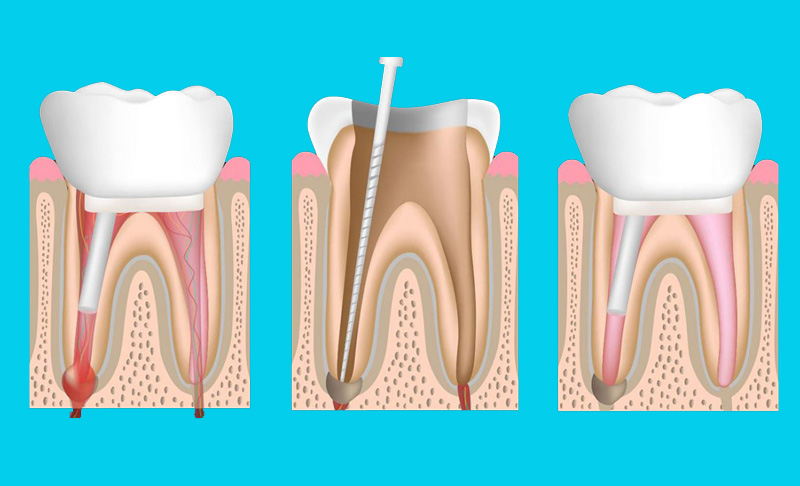
What's a Root Canal Treatment?
Root canal treatment or endodontic treatment is necessary when the center part within the tooth, known as the pulp, involving the blood vessels, nerves and living connective tissues, become infected or inflamed.
The root canal procedure is performed to save a damaged or poorly infected tooth, rather than uprooting it. This procedure is performed by an endodontist or a root canal specialist.
The most common causes of tooth damage or infection are, cavity due to plaque accumulation, cracked or broken tooth due to any accidents or trauma, and repeated dental treatment to a particular tooth. These issues can cause pulp inflammation, and infection and irreversible damage to the pulp. The patient may at times experience excruciating pain. The pain may subside when the pulp dies, but may frequently return as the infection spreads.
It's judicious to see a general dentist incontinently if you experience a toothache.
How is the Root Canal procedure done?
The entire root canal procedure may take place in one sitting, or at times 2 or 3 sessions depending on the condition of the tooth. Each sitting may last between 30-90 minutes. It's a simple procedure with fairly little or no discomfort.
- To begin, local anaesthesia is administered to the tooth which is to be treated.
- After the tooth and the surrounding areas are numb, the endodontist drills an opening through the crown or the decayed portion of the tooth to pierce the pulp chamber. However, the endodontist drills an opening from behind the tooth, If it's a frontal tooth.
- Using special equipments and techniques the endodontist cleans out the infected, diseased and dead pulp from the canal. The procedure doesn't cause any pain as the area is numb due to the anaesthesia, and the pulp that's removed is dead.
- Once all the infected and dead pulp is removed, the canals are disinfected using antimicrobial irrigants.
- The canals are also shaped with fine instruments so that they can be filled with the root canal fillings known as gutta-percha and sealed. During the process of shaping, an irrigation system is used to wash and clean the canals and remove the debris, before filling and sealing the tooth.
- A temporary cover material that acts as a seal is placed above the gutta-percha. This covering material is kept in place till a crown or a cap that looks like a normal tooth is fitted on top the treated tooth. At times, a post is fitted into the canal over the gutta-percha to give the crown more support.
- Later, the crown is cemented in place so that it noway dislodges.
Are there any side effects of the root canal procedure?
- A common side effect of root canal treatment is a dull pain in the tooth following the procedure. It generally vanishes within a week after the treatment. still, if any bacteria remains after the procedure, the infection may begin again. Thus, it's judicious to go to the dentist if the pain persists even after many days of the procedure.
- At times there could be a crack at the root of the tooth, which doesn't get noticed by the endodontist. However, the crack leaves the area exposed to bacteria and infection.
- The crown may become loose which will expose the treated tooth. If left exposed the seal on the tooth may erode leaving way for the bacteria to enter and infect the tooth again. You need to get it fixed by your dentist’s immediately if the crown dislodges.
